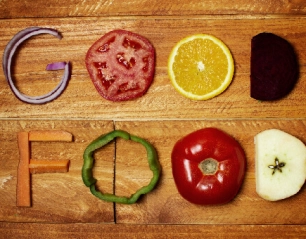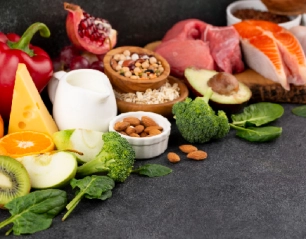The moment when you introduce your baby to solid food is a memorable one, filled with excitement, curiosity, and a little nervousness, to say the least. You are moving towards adding complement to the diet of the baby who has been taking only milk and you are going to wonder when is the right time to move the baby into the world of food: Which are the safe foods? What can make my baby feel more comfortable when dealing with new textures? It is a simple guide regarding first bites; it provides an easy way of starting solids with your baby and gives useful and supportive information.
Weaning into Solids: When to Ready Your Infant
Babies are usually prepared to have solids when they are about six months old. However, more than age, it boils down to the fact that your baby is demonstrating that he/she is ready to start on solids. However, each child is unique, so you should follow your intuition as well as other telltale signs. Watch out for these signs:
- Head Control: Your baby can maintain their head steadily.
- Sitting with Support: He/ she can sit without much support.
- Loss of Tongue-Thrust Reflex: It is the reflex, that babies use to push food out of the mouth, and through this mouth, loss of the reflex takes place.
- Inquisitive About Food: Your baby is interested in what you are eating, and steals food off your plate or looks on intensely.
- Swallowing: Baby swallows instead of choking on food when it moves it to the back of the mouth.
Begin with Iron-Rich Foods
It is advised that you start with iron-rich foods; especially since the baby is on exclusive breastfeeding, since iron reserves start to diminish at around six months. They may be diluted in breast milk or formula until they are of a manageable texture for your baby. One can introduce the new taste by beginning with common flavors so that the switch between milk and solids is easy. Examples of great first foods:
- Iron-enriched baby cereal e.g. rice, oatmeal, or barley
- Mashed meats such as beef or chicken
- Blended beans or lentils
Coming of Fruits and Vegetables
One new food should be introduced at a time and should be left for 3 to 5 days after the initial one before trying another to check the allergic reactions or sensitivity. After you begin to introduce iron-rich foods you can proceed to simple fruit and vegetable purees. Try:
- Mashed banana
- Poached or steamed and mashed vegetables such as carrots, sweet potatoes, or peas.
- Mashed apple or pear that has been cooked
The Texture: Puree to Finger Foods
Various textures also help your baby get into a habit of chewing and become more confident when approaching food.
1st Stage: Smooth Purees: When you first start feeding the baby, give her very soft and runny purees. They have the same texture as milk, thus soft and effortless to swallow by babies. Add more milk to cereal or mix fruits and vegetables and water into a smoothie.
2nd stage: Thicker Purees and Soft Mash: It is possible to thicken the texture a bit by bit once your baby feels comfortable. Partially mashed food or thicker puree will assist them to resume eating with the help of their chewing muscles although they do not have any teeth.
3rd Stage Finger Foods: At an approximate age of 8 to 10 months, your baby can get acquainted with soft-finger foods, including:
- Blanched vegetables (carrot sticks, potatoes)
- Small fruits (banana, avocado)
- Eggs
Feedings: Responsive Feeding Methods
Responsive feeding fosters a positive attitude towards food as it honours your baby in terms of hunger and fullness.
- Seat and Stimulate: Sit down with your baby in a high chair that is stable and makes him or her sit up, and make them feel like they are involved in a meal. Face them, look at them, and smile. Place a bit of food on a spoon, and wait until your baby gets ready to open his or her mouth.
- Allow Your Baby to Lead: Watch her growth and learn and recognize her hunger signs and allow her to determine the speed of feeding. When they lean forward or open their mouth, these are signs that they want more. Once they turn their head, close their lips, or push the food away, then it is time to stop. Listen to their cues when it comes to feeding: do not ever coerce them into eating.
- Practice makes perfect: It is normal not to panic when your baby turns down a food at first, because it requires about 8 to 10 exposures before he or she will accept a new flavor or texture. Be patient, calm, and steady. This is the time to strengthen the trust and emotional bonding over a meal.
Constructing a Balanced Diet
The initiation of the diet of a baby predetermines his or her long-term eating style and nutrition.
Provide Diversity: The Introduction of many tastes and nutrients to your baby when young is important. Diversity not only creates nutritional currency but also curbs the occurrence of picky eating in the future. Include:
- Variously colored fruits and vegetables
- products such as rice, couscous, and oats
- You can provide your baby with the protein he/she need to grow up big and strong by stuffing flexibility.
- Much easier choices of healthy fats may include avocado or olive oil drizzle.
Say No to Sugar and Salt: Babies do not require any extra salt or sugar. The kidneys are not fully developed yet and their taste buds are sensitive. Provide foods that are naturally flavoured and steer away from processed as well as packaged meals.
Allergens: Introduction, Timing and Methods
Give it in small amounts, watching out to see any reaction such as rash, vomiting, or difficulty breathing. Ask your pediatrician how to give your baby some of the common medications, particularly in the case of baby eczema or allergies in the family history.
Encouraged Early Introduction: Current studies indicate that exposure to common allergens at an early age (6-12 months) could prevent the emergence of allergies to food. These include:
- Peanuts
- Eggs
- Wheat
- Dairy
- Shellfish and fish
- Soy
Mealtime Routine for Your Baby
When you set up normal feeding times, your baby learns to have a sense of routine and control his or her hunger.
- Starting: Start with feeding once a day and then increase with time as your baby is interested. Most of the parents begin at mid-morning or early afternoon without the baby being too hungry or too tired.
- At 8 Months/9 Months: The Majority of children consume three solid meals and supplement with breast milk or other formulas in a day. At 9 to 12 months snacks may be introduced. Habitual feeding makes the babies feel safe and maintains food control.
Home Made vs. Store Bought
Whether bought or homemade, they can be quite satisfactory, only as long as they are nutritious and liked by your baby. Homemade alternatives provide you with more options for preservatives and texture. Just steam, boil, or bake then mash or puree.
When purchasing a store-bought check for:
- No added Sugars, or Salt
- No artificial
- Visible ingredients
Challenges and the Way to Solve Them
All the challenges are a learning experience for the parent along with the baby as follows:
- Baby Refuses Some Food: Stay calm. It’s normal. Give some textural variety and flavors and resolutely repeat. The hunger cues depend daily.
- Gagging and choking: Babies gagging during the learning process is also quite normal - it is how they ascertain how to use food safely. Choking is deathly, muffling. Take infant CPR classes and constantly watch.
- Constipation: This may occur at the onset of solids. Provide fresh water during meals and high-fiber foods such as prunes, pears, and oatmeal.\
Journey and Fun Celebration
A spoonful brings a step to independence, development, and family experiences. Take pictures, don't miss those curious looks, dirty faces, and the glowing smile after the first bite of the leadership food. These are instances that are memorable to your baby because of the miracle that was made in the transformation.
Conclusion
Feeding your baby solid food is one of the greatest milestones not only for your child but also for you. It is an open door into a new world of exploration of tastes, feelings, lifestyles, and happiness. It can be slow, it can be fun, and above all, it should be driven by love and patience. The first bites your baby takes help shape his or her lifetime of healthy eating so take a deep breath, pick up that small spoon, and go with this messy magic of eating time.
Must read this: Family Adventures Made Easy with BabyQuip
Frequently Asked Questions (FAQs)
Only with the recommendations of your pediatrician and when your baby completes the signs of readiness.
The advantages of both are meritorious. Most of the parents combine what their baby likes.
Common allergens should be presented early and introduced gradually (one at a time), and their reactions observed.
Was this helpful?

































































































































